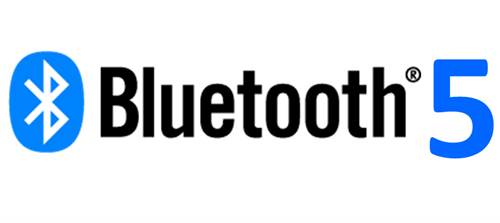SSZTB65 June 2016 CC2640 , CC2640R2F
The Bluetooth® SIG recently announced Bluetooth 5, which is a significant upgrade from the existing Bluetooth Core Specification 4.2. The big improvements in range, speed and connection-less broadcasting capacity will propel Bluetooth into the home and building automation markets as well as other Internet of Things (IoT) application areas. Combined with the security and privacy upgrades delivered with Bluetooth 4.2, Bluetooth 5 will become the perfect wireless RF protocol for low-power mobile personal networks as well as longer range building and IoT networks.

At TI, we have long anticipated these upgrades. Our new and highly flexible SimpleLink™ ultra-low power CC2640R2F wireless microcontroller (MCU), released in December 2016 to mass production, was designed with Bluetooth 5 in mind and can already transmit and receive the new longer range and higher speed physical RF modulation formats. TI has released the first fully qualified Bluetooth 5 solution and will continue to introduce software updates to support all the new features of the Bluetooth 5 core specification. Developers who would like to build flexible solutions with an easy upgrade path to Bluetooth 5 are encouraged to start developing on the CC2640R2F wireless MCU today
What will Bluetooth 5 bring to the table?
- Longer range will enable point-to-point and star networks to provide reliable, whole-house coverage for smart home applications such as security systems, lighting, smoke detectors and door locks. TI’s SimpleLink ultra-low power wireless MCUs provide industry leading RF performance to enable longer range and more robust connectivity today, and will introduce up to four times longer range with Bluetooth 5. Longer range will also be a huge advantage in mesh networks, reducing the number of hops necessary to transfer packets between nodes, which in turn reduces network congestion and improves stability.
- Higher speeds will enable data transfer at twice the rate while improving spectral and energy efficiency and enable new higher throughput applications such as audio. Transferring large amounts of data, for instance in medical, sports and fitness applications, will also be much faster providing a better overall user experience. When combined with data length extension in Bluetooth 4.2, which is already supported on CC2640R2F devices, higher speeds from Bluetooth 5 will provide 500 percent increased data throughput over Bluetooth 4.0. Today, TI’s CC2640R2F wireless MCU supports up to 5Mbps communication.
- Increased broadcasting capacity will allow beacons to transmit richer and more intelligent data to enable effortless and seamless location and navigation services.
The Bluetooth 5-ready SimpleLink Bluetooth low energy CC2640R2F wireless MCU family will be accompanied by software development kit (SDK) releases supporting Bluetooth 5 in the first half of 2017.
To Start Developing Your Bluetooth Low Energy Application Today:
- Visit TI’s SimpleLink Bluetooth low energy CC2640R2F wireless MCU product folder
- Order a Bluetooth low energy LaunchPad™ development kit to quickly kick start development.
- Use the Bluetooth Developer Studio to quickly develop your Bluetooth low energy application with TI’s BLE-Stack SDK.
- Read about BLE-Stack 2.2 which supports all Bluetooth 4.2 core specification features in this blog post.
- Have additional questions? Ask our engineer experts on the TI E2E™ online community Bluetooth low energy forum.